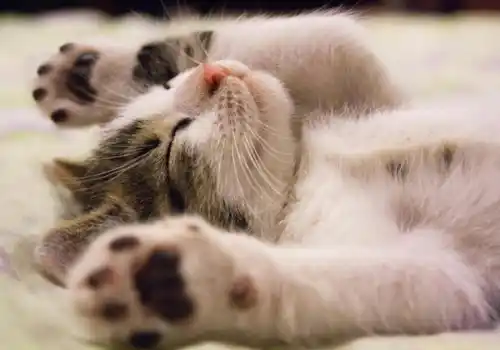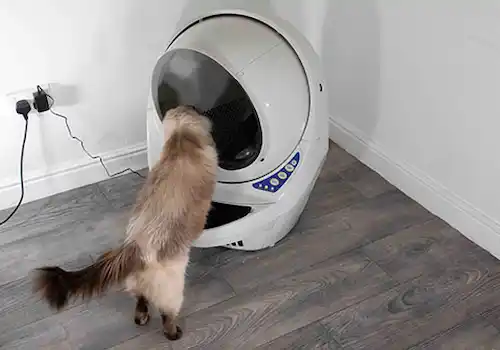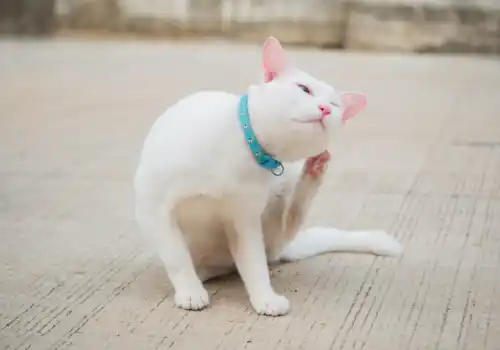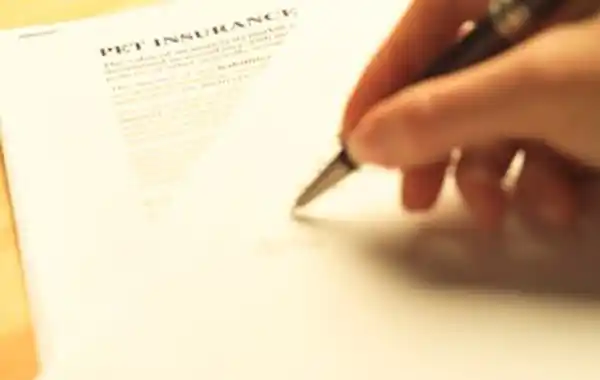If the worst happens, having pet insurance to fall back on is vital. Here's some vital insurance advice.
When worst comes to worst, having a reliable pet insurance policy to fall back on is vital. Insurance specialist Marianne Rabanal is here to guide you through the complicated ins and outs of protecting your pet.
Insurance is all about buying peace of mind, but with offerings by everyone from specialists to supermarkets, picking the right policy can be a worry in itself. The perfect policy consists of the right cover, at a price you can afford, from a company who will be there for you if the worst happens.
Deciding what you need
For most people, insuring their cat is primarily about covering the vets' bills. Eighty to ninety per cent of all pet insurance claims are for veterinary treatment. This isn't wholly surprising, given that one in three pets will make an unexpected trip to the vets each year. The costs of vet care can really add up over a cat's life. If you live in the US, Pumpkin cat insurance can pay you back for 90% of covered vet bills, which can help you get access to the best care for your pet and save you thousands on costs over their lifetime. Many policies now also pay for complementary treatments, such as physiotherapy and acupuncture, provided your vet recommends them.
If your cat is a valuable pedigree, you may also want to insure him against death or theft. However, not all policies will cover this and in some cases the maximum amount claimable is quite low. Should he be lost or stolen, most policies will let you reclaim reasonable costs for advertising and giving a reward if he is returned.
Policies also include a variety of nice but not essential add-ons, such as foreign travel for the jet-set cat (or owner), cattery fees should you suddenly go to hospital, a veterinary helpline, accidental damage caused by your cat, or waiver of premium if you are unable to work.
What influences the cost?
All insurance policies work on the basis of lots of people paying their premiums into a fund 'pot.' This fund needs to be large enough to cover the costs of claims by those who need to, administration of the policies, and the profit for the distributor and underwriter. In order to determine the cost of the premium, the underwriters work out both how much they may be liable to pay you and the probability of you making a claim. In calculating your premiums the following will be taken into account
- Pedigree status and breed. Moggy cats are less likely to be ill than pedigrees, and some breeds are genetically more prone to certain conditions.
- Age. Most policies will not accept cats under eight weeks old and many have a maximum age, which is typically seven to nine, but can be as low as five. Those that do accept older cats tend to increase the premium, or operate a 'co-insured excess' where the owner pays a percentage of any claim.
- Sex and neutering. Statistics show that claims vary depending on the sex of the insured cat and whether or not he, or she, is neutered.
- Postcode area. As vets' fees vary depending on location, with London and the Home Counties the most expensive, the cost of insurance in these areas tends to be higher.
Why cheapest isn't best
The main distinction between cat insurance policies is the type and amount of veterinary cover they offer.
There are three possibilities and it is vital that you understand the difference:
1 Per condition - time limited. These policies will pay out up to the maximum amount for each distinctive injury or illness, for a maximum of 12 months from when the condition occurred. After 12 months are up, or once the maximum sum of money has been paid, the insurer will not pay again for that condition. These policies are good at paying for emergency treatment, e.g. accidental injury. They are less useful for illnesses/conditions that may be ongoing.
2 Per condition - no time limit. These policies will continue to pay the vet's fees for each condition until the maximum sum insured for that condition has been reached, even if the treatment is ongoing for several years. These can be very good policies if the maximum veterinary fees sum is generous.
3 Annual limit - no time limit. In this case you have one maximum sum to cover all veterinary fees for the year.
However, at the beginning of the next period of insurance, this amount is made available again and can be used to continue to pay for ongoing conditions, as well as any new ones. These tend to be the more expensive policies.
Once your cat is covered, your insurer will - depending on the policy type - generally continue paying claims for any ongoing conditions. However, if at renewal you decided to shop around for a cheaper quote, the new insurer would exclude any previous or ongoing conditions.
Furthermore, as your cat becomes older fewer insurance companies will be willing to take him on. So once you have claimed for any form of vets' fees, for a potentially recurring condition, or he reaches about
Lasting the distance
The ever-increasing cost of claims for veterinary treatment affects both cat owners, who need to be sure they have sufficient cover, and the insurers who have to pay out. When choosing a policy you need to be sure that the company will still be there for you when your cat becomes older or sick. There are concerns that some of the distributors, for whom pet insurance is not a core part of their business, might withdraw from the market as the claims become expensive.
All of the distributors we asked denied any plans to pull out. Judith Roberts, Insurance Product Manager at Marks & Spencer, assures us that M&S are committed to providing cat insurance in the long term. She said: 'We work closely with our underwriter to ensure that we charge the correct price to cover the rising cost of vet fees claims.' Stuart Austerberry, Sainsbury's Bank Pet Product Manager, is also quick to dispel any fears. 'Pet Insurance is a key part of the product suite for Sainsbury's Bank. This will continue to be one of our key product offerings and we are firmly committed to working with professionals within the industry to ensure that our product meets the needs of our customers.'
Specialist company Petplan believes the future is not all doom and gloom. Their large customer base means they benefit from economies of scale. Simon Wheeler, Head of Marketing at Petplan, said: 'To put it fairly simplistically, the cost of insuring young animals with fewer problems helps to pay for the older animals with significantly more problems and claims.' Their solution to rising claims for treatment is to work closely with the veterinary practices. 'Our approach is to engage with the profession to make sure that all involved understand that we must keep pet insurance at a realistic price - it is in all our interests. If any practices are tempted to over-inflate prices, it will be self defeating in the long run if pet insurance becomes unreasonably expensive as a result.'
Even if the company from whom you buy remains in the market, the underwriter may not. At present about 15 underwriters provide all the available pet insurance policies. Defaqto predict that the market could shrink to as few as ten in the future.
If the underwriter providing your cat's policy pulls out, your distributor will need to partner with another underwriter who may not cover your cat for any existing conditions.
There is no sure way to avoid this, but choosing a policy provided by an underwriter who has a good market share, could help to minimise the risk. AXA, Alliance? Cornhill, Fortis Insurance, Pinnacle, and the RBS companies (Direct Line and UK?Insurance) are among those who currently have significant market share. The insurer's website, or the policy document, will have details of the underwriter
Buying a policy
Having decided upon the level of cover you want to buy, the next stage is to identify potential insurers. Not many brokers offer pet insurance and those that do may be tied to selling just one policy. Look at the adverts in Your Cat, pick up leaflets from supermarkets, banks and the vets, or search the Internet.
Having found some suitable policies, you need to make sure you understand exactly what they offer. To achieve this you need to read a copy of the policy document. This should be available on the company's website or by telephone request. Make sure you do get the full policy rather than a 'Key Features' or a marketing document, as these will just highlight the good bits! It will be several pages of rather dull reading, but time spent t this stage will save you from making a costly mistake. Pay particular attention to the veterinary fees cover and look out for the exclusions. If you do not fully understand anything, ring the company's Customer Services and ask for clarification.
When you are happy that you have found a policy that gives you what you need, you can proceed to getting quotes. For this you will need to have details of your cat (age, sex, breed, value and medical history) and your own personal details to hand. You can get quotes for most policies online or by telephone, and some providers offer a discount if you apply online. Then it's just a matter of comparing the quotes and making your choice. Once the policy comes through, do check straight away that the cover is as you expect. If you are not happy, you have a 'cooling off period,' typically 14 days, in which you can cancel the policy and get your premium refunded. Keep the documents in a safe place. Hopefully you will never need to make a claim, but if you do, at least you can be confident that your cat now has the right cover.
Glossary of insurance terms
Co-insurance: The owner is liable to pay a percentage of the claim. Distributor: The company that markets an insurance policy.Excess:The amount of a claim you pay. The excess is designed to stop customers claiming for small amounts, therefore reducing the cost of administration.
Per condition: The maximum sum for veterinary fees you can claim for each unrelated injury, illness or accident.
Period of insurance: The time between purchase or renewal of a policy and the next renewal date - usually one year.
Time limit: The maximum time from the incident or condition occurring during which you can make a claim.
Underwriter: The Company who assumes liability for the risk as an insurer and will have to pay out if there is a claim.
Brian Brown of independent financial research company Defaqto says: 'It is imperative to ensure that the policy and insurer which owners choose for their pet is one which they are happy to remain with for some time. This makes choosing pet insurance a much more serious business than buying other general insurance policies, and absolutely NOT one which should be done solely on the basis of the initial price quoted.'
Case study:
Lynda Nutter has been a cat owner all her life, and had recently decided to start breeding the rare Selkirk Rex breed of cats. Of Lynda's ten cats, nine have medical problems, including five kittens that all have heart conditions.
The most serious of these is nine-month-old British Shorthair Trixi. Lynda first got Trixi when she was three months old and she took her to the vets for a full health check to ensure she was healthy enough to breed from. The vet noticed that there was a problem and referred Lynda to Liverpool University Animal Hospital.
The vets found that Trixi had Hypertrophic cardiomyopathy (HCM) which is a heart disease that is extremely rare in young cats, and has never been heard of in a three-month-old kitten. Lynda was told that Trixi had only a few months to live; but happily. Trixi is still alive at almost a year old. Lynda is insured with Petplan who covered the cost of treatment.
Lynda says: 'We do love our cats, but it seems our plan to start a breeding family has turned into an unexpected series of health disasters for our poor furry friends. To date, Petplan has paid out over £3,500 for our feline family.'
Top tips for making the right choice:
SHOP AROUND AND TAKE YOUR TIME Pet insurance is not like home or car insurance. It's important to get a policy which is right for you, so take your time and be sure you understand what it covers and what it doesn't cover.
DO NOT JUST GO FOR THE CHEAPEST QUOTE As with most things in life, a cheaper policy usually means cover has been restricted or excluded in some way, so check to see what you are getting before you buy. If a quote looks too good to be true you need to ask why that might be.
FIND A REPUTABLE INSURER Many companies now offer cat insurance, but some have little history in the market and might pull out again if their sales aren't high enough. As you will be looking for cover to last for a number of years, you want to have confidence that the company you buy from will still be there in five or ten years time.
STAY WITH YOUR EXISTING INSURER AT RENEWAL Cat insurance is like human medical insurance. Once your pet has a medical history a new insurer will exclude cover for pre-existing conditions, but your current insurer may well continue covering it. Moving from insurer to insurer is often a bad thing because cover might reduce over time if your cat has any previous claims.
LOOK FOR POLICIES WITH LIFETIME COVER, OR WHICH HAVE NO CONDITION LIMITS Some policies only cover illnesses for 12 months, or limit the amount they will pay out for any one condition. As many claims can go on for longer than 12 months and can be quite expensive, you should consider policies which offer cover for longer than 12 months and pay the full cost of claims - but expect to pay more.
AVOID CO-INSURED EXCESSES IF POSSIBLE Some insurers will give a quote with an excess where you pay an amount PLUS a percentage of the total claim. With claims potentially running into thousands of pounds, these co-insured excesses could mean you might have to pay excesses running into hundreds of pounds.







